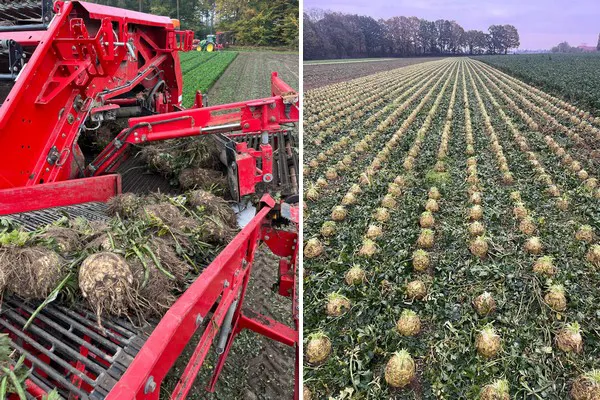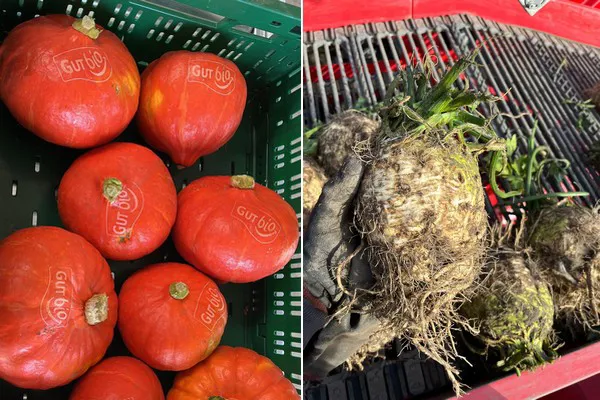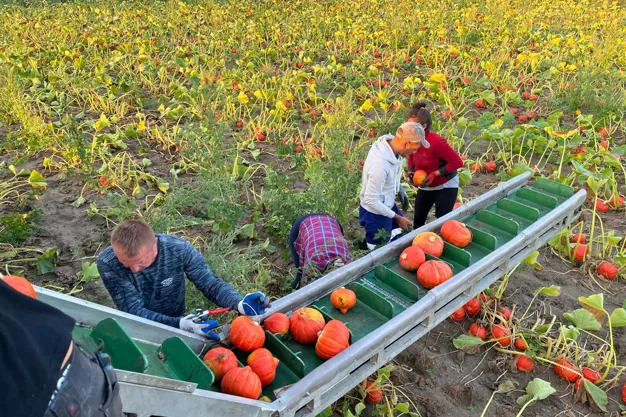Due to exceptionally wet field conditions, many are reflecting on a mixed harvest campaign for field vegetables. "For celeriac, we were sold out by the end of February, about four weeks earlier than usual. The same applies to the marketing season for organic Hokkaido squash: Normally, we are able to supply until the end of January, but this year we had to end the season right at the turn of the year," says Patrick Pohlmann, organic producer and CEO of the eponymous company that is based in Münster.

The celeriac harvest: From the season's start in early October, the vegetable is marketed fresh from the field throughout the season.
"For celeriac, I would rate the quality as 2.0, meaning average to good. For the pumpkins, however, I would rather speak of a grade of 3.0. The sorting was fine, but we had significant problems with the hardiness of the goods, which especially towards the end of the season led to increased complaints," the organic farmer, who produces organic, Naturland, and Demeter vegetables, concludes. Adding to the challenge are the continuously rising operating costs. "We were able to achieve a price increase, but to somewhat offset the additional costs, we would need about an eight percent further price increase for celeriac."

Field-fresh organic pumpkin and celeriac
Celeriac gains ground, pumpkin cultivation takes a hit
For the coming season, the cultivation planning is taking shape, Pohlmann continues. "We will plant about ten percent more celeriac, while reducing pumpkin cultivation by 20 percent. Among other things, due to the increase of pick-your-own fields and directly marketing farms, I see less upward potential for organic Hokkaido. For celeriac, we have now set our sights on the organic industry. We are noticing that the organic sector is striving to get more organic raw materials into jars and cans at discounters. It is now our task to tap into this market segment."

The pumpkin harvest
Still, Pohlmann markets about 70 percent of our celeriac yields conventionally, he quantifies. "Nevertheless, I also see growth opportunities for Demeter goods in the future. In the end, it's simply a matter of time until the trade commits to it."
Images: Organic Farming Patrick Pohlmann KG
For more information:
Patrick Pohlmann
Organic Farming Patrick Pohlmann KG
Mariendorfer Str. 4 E
48155 Münster
Tel.: 0049 172 53 55 333
patrick.pohlmann@gemuesebau-pohlmann.de
